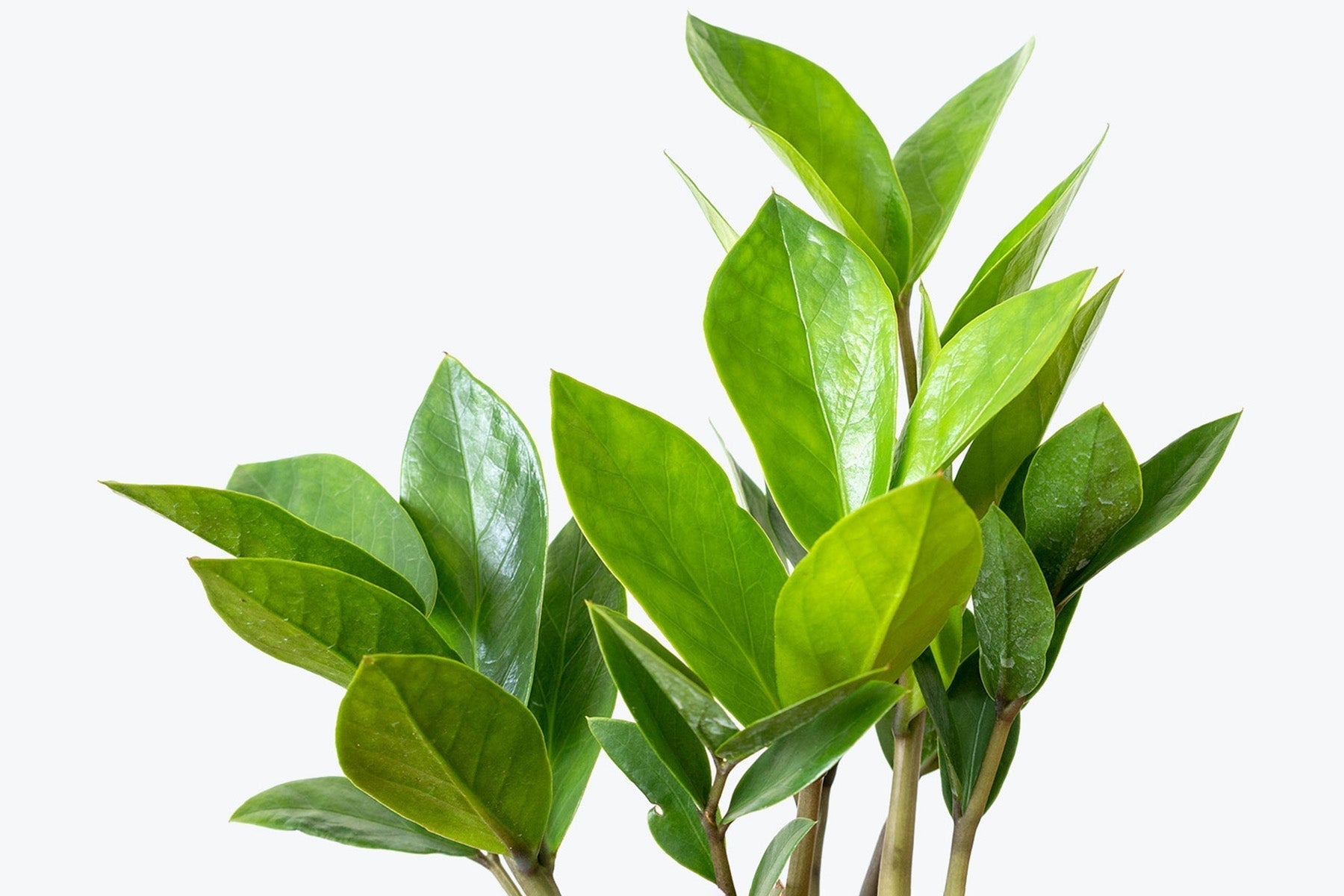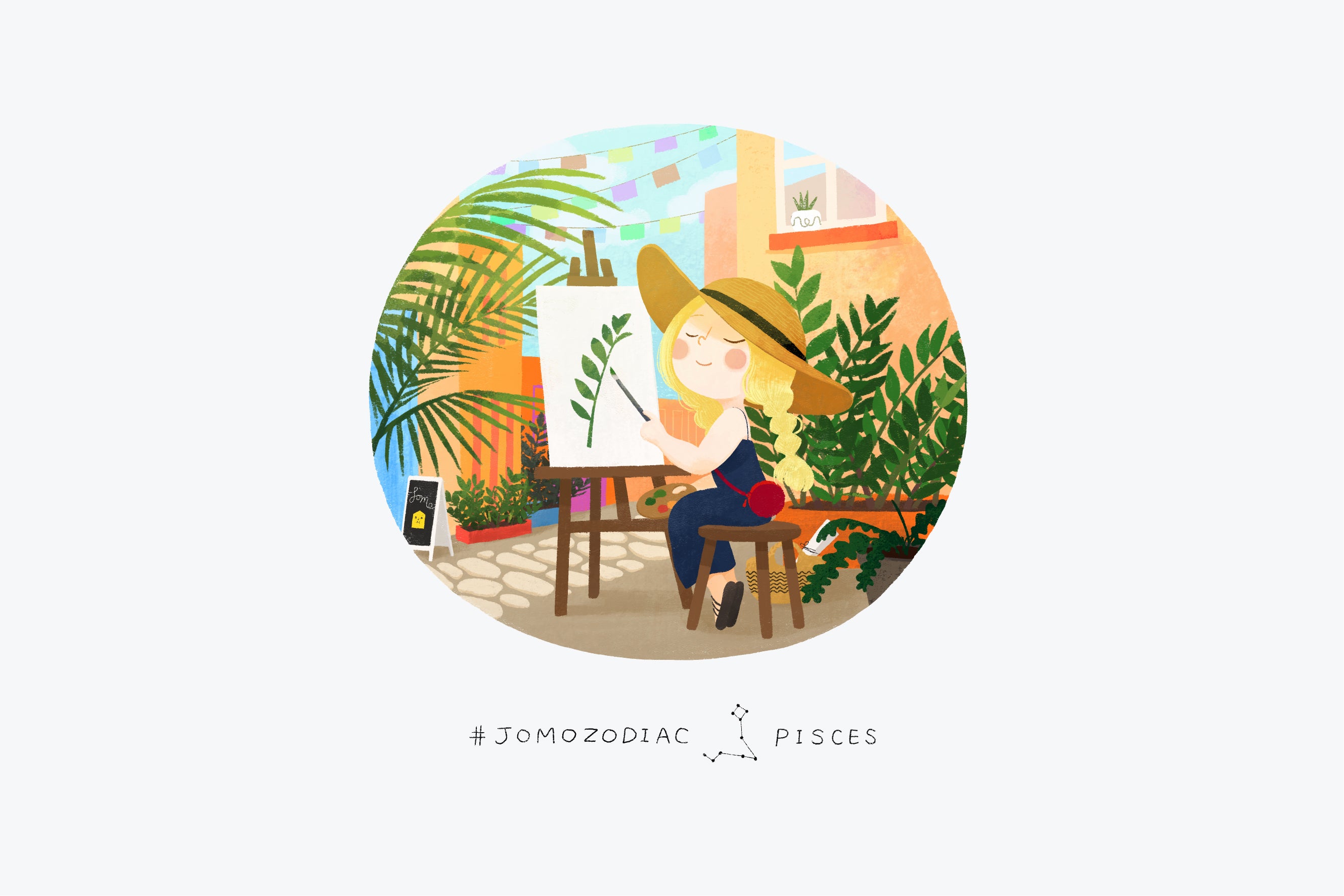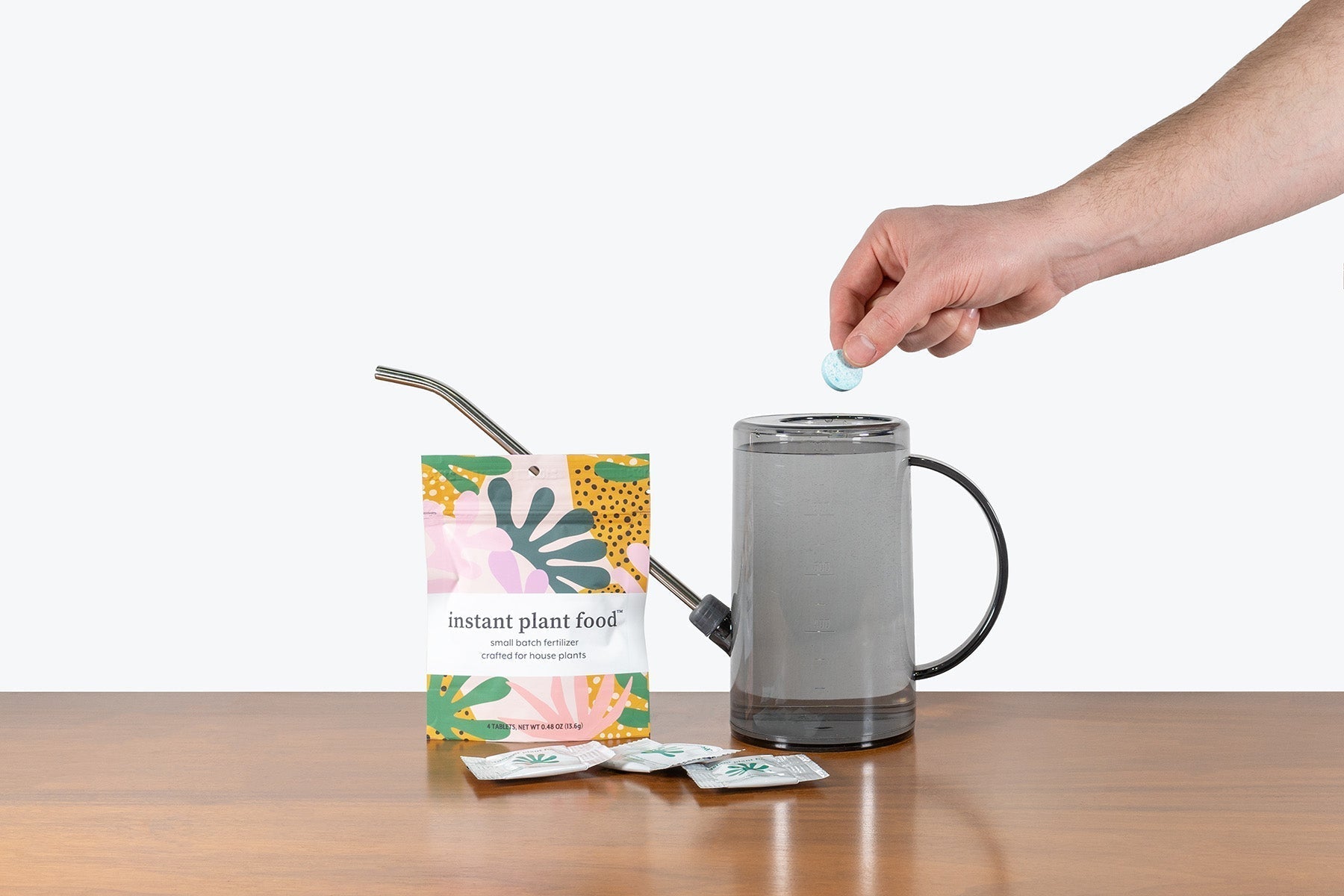
How to Take Care of Your ZZ Plant
Let's talk about one of the toughest options out there that holds the highest position when it comes to low maintenance and low light houseplants - the Zamioculcas zamiifolia, ZZ plant, or Zanzibar Gem. A tropical perennial native to Eastern Africa, the ZZ plant is vastly popular in many homes due to the ease of its care and tolerance of almost all conditions. Smooth, naturally shiny leaflets grow up the thick stocks of the plant, starting a bright, lime green in their youth and slowly fading to a darker green as the stock matures. Each stock grows from large, tuberous, water-storing rhizomes, which reside right at the soil line, partially exposed above the soil.
△ 10" ZZ Plant
When it comes to ZZ plants, there are actually a few options from which to choose from! Along with the classic variety, there is the compact, twisted version, called the ZZ Zenzi. This variety is a dwarf variety, with dark green, curled leaves that grow close together on fleshy, arching stems. It is just as low light tolerant as its sister plant, but with a little more pizzazz. Another option would be the Zamioculcas zamiifolia Raven, or ZZ Raven, which is the most distinctive of all the options. Its leaves emerge lime green and then fade to a striking jet black, providing an extremely unique houseplant option with black foliage. Learn more about ZZ Plant varieties here →
Virtually indestructible and resilient, ZZ plants can handle low light, infrequent watering, most houseplant soil types, and are practically immune to pests and diseases. All of these reasons make them a great option for offices, those who travel frequently, or those who often forget to water, as they thrive off of neglect. If you've never owned a plant before, or wish to get a plant for someone who is new to the houseplant world, any variety of ZZ would make an excellent gift.
Light Requirements
When it comes to ZZ plants, they can be placed almost anywhere in your home. From a bright window all the way down to a windowless room with fluorescent lighting. The main thing that they cannot handle is prolonged, direct sun, as this will scorch their leaves. Although they can handle almost any light on the spectrum of indoor lighting, keep in mind that their growth habits will change depending on the light they are receiving.
💡
Remember to dust off your plant's leaves every once in a while! This will allow the plant to perform photosynthesis more effectively, as the dust will block a little bit of the light that the plant is receiving. This is especially important for plants that are in lower light. Avoid using leaf shine though as this will clog the pores on your plant's leaves.
Generally, the lower light a ZZ plant receives, the higher the chances of their growth becoming either stunted or extremely leggy over time, meaning their leaves will be more spaced out and new growth less compact. They are also a rather slow-growing plant, so with lower light, this growth will be even slower. These are just some things to keep in mind when you place your plant in dimmer settings, because, as with all plant growth, the speed and quality of that growth depend on how much light is received.
△ 4" ZZ Plant Zenzi
Now, let’s outline the lowest light conditions that your plant can handle:
- In a windowless room with fluorescent lighting nearby as the only light source
- In the corner of a room with an East, West or South-facing window over 10 ft. away
- A couple meters away from a North-facing window
- Next to a North, East, West, or South-facing window that is facing a courtyard or is blocked by a nearby building or tree
Remember that "thriving off of neglect" is different than "thriving in low light," as most plants do not actually thrive when they receive less light. Of course, there are exceptions, but ZZ plants still like a little light, even if it is just from fluorescent bulbs! Sometimes too much light will slow your plant's growth as well, so keep an eye on your plant and watch how it adapts to its home.
📋
When it comes to repotting, keep in mind that they prefer to be root-bound, only needing to be repotted about once a year while young (depending on how much light they are receiving), and then much less often as they get older. If the rhizomes are pressing against the walls of the pot and warping it, that is when its home needs to be upsized. You can read all about how to repot in our step-by-step guide here.
Here are some brighter light conditions for your ZZ plant:
- Next to a North or East-facing window
- Next to, or close by, a South, Southwest, or West-facing window that has sheer curtains for some bright, indirect light (keep in mind, they cannot handle any prolonged, direct sun so the curtains keep the leaves from getting burned by the sun)
- About 5-10ft away from a South, Southwest, or West-facing window without curtains
Bright, indirect light is great for ZZ plants but not essential, as your plant will be content almost wherever you place it! It is also a great idea to rotate your plant, no matter where it sits, as this will allow for even growth on all sides.
Watering Requirements
Watering is the most important aspect of a ZZ plant's care to get right, as the main thing they will not tolerate is too much water. Only water your plant when the soil is completely dry, which can take from 2-4 weeks, depending on the size of the plant and how much light the plant is receiving. Due to their rhizomatous root system, which are those thick, round tubers in the soil, they are extremely drought-tolerant and can handle infrequent watering. They store water in those rhizomes, as well as their thick, moisture-rich leaves, and only hold onto as much water as the plant can absorb.
🚿
When in doubt, let it dry out! Overwatering is the biggest issue when it comes to ZZ plants because if the plant receives too much water, rotting and leaf loss will surely occur, as the plant cannot handle excess water. It is much better to let your plant dry out if you are unsure.
This is why it is so important to water your plant accordingly. The ZZ plant that receives bright light will need to be watered more often than the ZZ plant that resides in a dark corner, and vice versa. But, no matter where your plant sits, let the soil dry out before watering it again. When the seasons change, adjust your watering again! In the spring and summer months, when the days are longer and brighter, the soil of your plant will dry out quicker than the shorter, darker days of the winter months. In the lowest light settings, this can mean not watering your plant more than once a month.
△ 4" ZZ Plant Raven
When it comes time to water, if your plant is in a darker corner, only give it a little water, as you don't want to soak the soil and have your plant sitting in it for too long. If your plant is in brighter light, water your plant fully, until there is water coming out of the drainage holes and the soil has absorbed the water. If the water seems to drain out right away, without absorbing, try bottom-watering instead:
- Fill up a bowl or saucer with water and place the nursery pot into it, letting the water soak up from the bottom holes in the nursery pot
- Once the top layer of the soil is moist, from the water sponging up
- Remove the plant from the bowl and let the excess water drip out before returning it to its decorative pot.
Humidity
ZZ's are not too picky when it comes to humidity, even though they are just fine in average home temperatures they do prefer humid environments as they are still tropicals! So if you have the time, and want to make the effort, you can:
- Place the nursery pot on top of a bed of rocks that are covered in water, which increases the humidity in the air around the plant
- Purchase a humidifier and keep it in the same area as your plant when turned on
Fertilizing
ZZ plants are fairly light feeders and don’t require too much when it comes to fertilizing. It is best to fertilize once a month through the spring and summer months and then do not fertilize throughout the winter. Just use a generic house plant fertilizer that any greenhouse, garden centre, or plant shop offers! Always make sure the soil is evenly moist before fertilizing any of your plants
Toxicity
Since they are mildly toxic to both humans and pets, due to the calcium oxalate crystals that all parts of the plant contain, ZZ plants are best kept away from children and animals. If ingested, and depending on how much, they can cause slight mouth or stomach irritation, which can lead to possible vomiting.
Common Pests & Problems
Keeping in line with their great reputation as houseplants, ZZ plants don't have a lot of problems when it comes to pests and other issues. That being said, even though most of these problems are not very common, we still want to outline any possible issues you could experience while having them in your care:
Overwatering:
Are the stems and leaves yellowing and mushy? Are you trimming off yellowing, dead leaves very often? If so, you most likely are experiencing an overwatering issue where the soil has remained damp for too long and caused the roots to rot. Remove some soil from the root ball, gently trim any rotted roots off with clean shears, and repot your plant into fresh, dry soil, giving one good watering, and then making sure to only water when the soil is completely dry.
Brown tips:
This can happen for a few reasons, remove any completely brown leaves (as they will never turn green again) but never remove more than 20% of the plant at a time. The following points are usually the reasons for browning tips,
- Poor water quality - Tap water generally contains chlorine, fluoride, and other minerals that can cause foliage to burn while it builds up in the plant. If this is the reason, try using rainwater, distilled water, or let your tap water sit out for a few days, allowing the harmful chemicals to evaporate.
- Low humidity - A mixture of dry air and low humidity can cause browning as well, so try to increase the humidity around the plant if that is the case!
- Prolonged dry soil - Although we definitely recommend not overwatering, if your plant is left to go too dry for too long, some browning can occur. Try bottom watering your plant, as we described in the Watering Requirements.
Scale:
if you notice a sticky, honeydew-like sap on the bottoms of leaves and brown “bumps” along the stems, you may be experiencing scale. Their damage includes yellowing and dropping of leaves (not just the oldest leaves) and very little new growth. They can be treated with any insecticidal soap, just make sure you treat your plant consistently for a few weeks to eliminate them.
With all that being said, ZZ plants are a great addition to your home because they are incredibly strong, lower light plants and they are a breeze to take care of, just don't take a bite of one!









